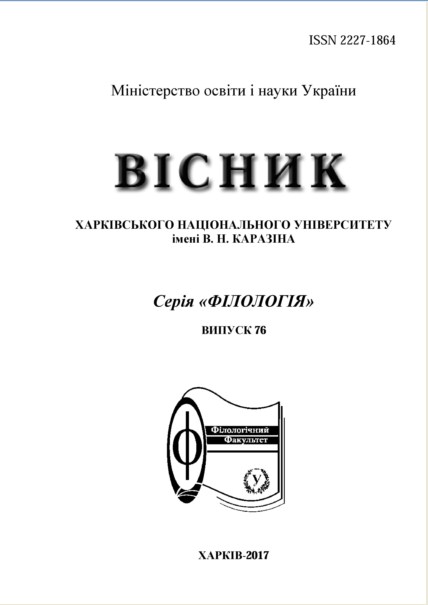The national peculiarities of Y. Kawabata’s story "Snow Country"
Abstract
The article investigates Y. Kawabata's story "Snow Country" through the aspect of the national paradigm. The author outlines the thematic and problematic aspects, through the concepts of "nature" and "beauty" which are characteristic for Japanese national outlook. It has been proved that the motif of love is treated in the dialectical entity with the above-mentioned concepts and allows the author to show the originality of nature and the particularity of every moment in human life. The national principles of restoring the world have been selected, and the two ways of describing the reality have been suggested accordingly: the real and the psychological. The author interprets literary methods of creating the internal image of the world and shows the importance of the structural and meaningful role of characters and their national expressiveness. The article reveals the national roots and cultural traditions that depict the ethnic identity of the author's attitude in the story.
Downloads
References
2. Дзюб І. Ясунарі Кавабата // Кавабата Ясунарі. Країна снігу; Тисяча журавлів : повісті / [пер. з яп. та післямова І. Дзюба]. – 3-е вид. – К. : Видавництво Соломії Павличко «Основи», 2003. – С. 257–261.
3. Кавабата Ясунарі. Країна снігу / Я. Кавабата // Кавабата Ясунарі. Країна снігу; Тисяча журавлів : повісті / [пер. з яп. та післямова І. Дзюба]. – 3-е вид. – К. : Видавництво Соломії Павличко «Основи», 2003. – С. 5–138.
4. Література Сходу. Японія, Китай // Давиденко Г. Й., Стрельчук Г. М., Гринчак Н. І. Історія зарубіжної літератури ХХ століття : навчальний посібник. – 3-е вид. – К. : Центр учбової літератури, 2011. – С. 220–234.
5. Мещеряков А. Н. Японская мифология // Мифы народов мира : энциклопедия : в 2-х томах / [гл. ред. С. А. Токарев]. – М. : Советская Энциклопедия, 1982. – Т. 2. К – Я. – С. 685–686.
6. Ясунарі Кавабата // Зарубіжна література / [за ред. О. М. Ніколенко, Н. В. Хоменко, Т. М. Конєвої]. – К. : Видавничий центр «Академія», 1998. – С. 238–242.




